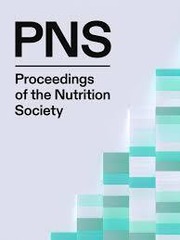Article contents
Intakes and sources of menaquinones (vitamin K2) in the Irish population aged 1–90 years
Published online by Cambridge University Press: 10 June 2020
Abstract
Recent evidence suggests that menaquinones (Vitamin K2) may be important for both bone health and cardiovascular health. With the exception of menaquinone-4 which is formed from the tissue specific conversion of phylloquinone or menadione, menaquinones are synthesized by bacteria. They are typically found in foods of animal origin such as meat, dairy and fermented foods and may account for up to 25% of total vitamin K intake. There are few data available on menaquinone intakes in population groups due to lack of available composition data. The Irish food composition database however has recently been updated to include data on menaquinones. Therefore, the aim of this study was to use these data to estimate the intakes and key dietary sources of menaquinones (menaquinone-4 & menaquinone-5–10) in the Irish population.
Analyses included data from four nationally representative surveys of the Irish population; The National Pre-School Nutrition Survey (1–4y; 2010–2011), the National Children's Food Survey (5–12y; 2003–2004), the National Teens’ Food Survey (13–17y; 2005–2006) and the National Adult Nutrition Survey (18–90y; 2008–2010) (www.iuna.net). For all of the surveys, food and beverage intake data (including supplements) were collected using food records and quantified using food scales, photographic atlases, household measures and standard portion sizes. Mean daily intakes of menaquinone-4 and menaquinone-5–10 were estimated using UK food composition tables and analytical values from published papers. The percent contribution of food groups to menaquinone intake was calculated by the mean proportion method (which provides information about the sources that are contributing to the nutrient intake ‘per person’). Statistical analyses were carried out using SPSS© V22.
Mean intakes of menaquinone-4 ranged from 8–12μg/d and 10–14μg/d in children aged 1–17 years and adults aged 18–90 years, respectively. Mean combined intakes of menaquinone-5–10 ranged from 32–43μg/d and 32–50μg/d in children aged 1–17 years and adults aged 18–90 years, respectively. ‘Meat & meat products’ were the top contributor of menaquinone-4 (50–66%) intakes across all population groups followed by ‘milks’ (9–25%). ‘Meat & meat products’ (44–61%) and ‘cheeses’ (21–37%) were important contributors to menaquinone-5–10 intakes across all population groups examined.
This study is the first of its kind to report the intakes and sources of menaquinones in the Irish population. ‘Meat & meat products’, ‘cheeses’ and ‘milks’ are important contributors to intakes of menaquinones in the Irish diet. Further research is required to fully understand the role of the menaquinones in human health.
- Type
- Abstract
- Information
- Copyright
- Copyright © The Authors 2020
- 1
- Cited by





